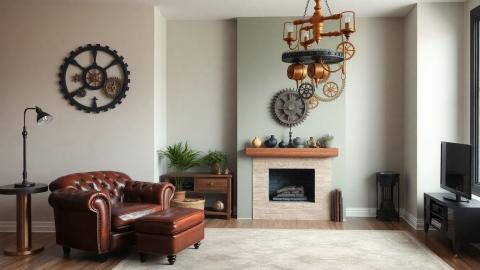The Art of Eclectic Interior Design: Blending Styles with Soul
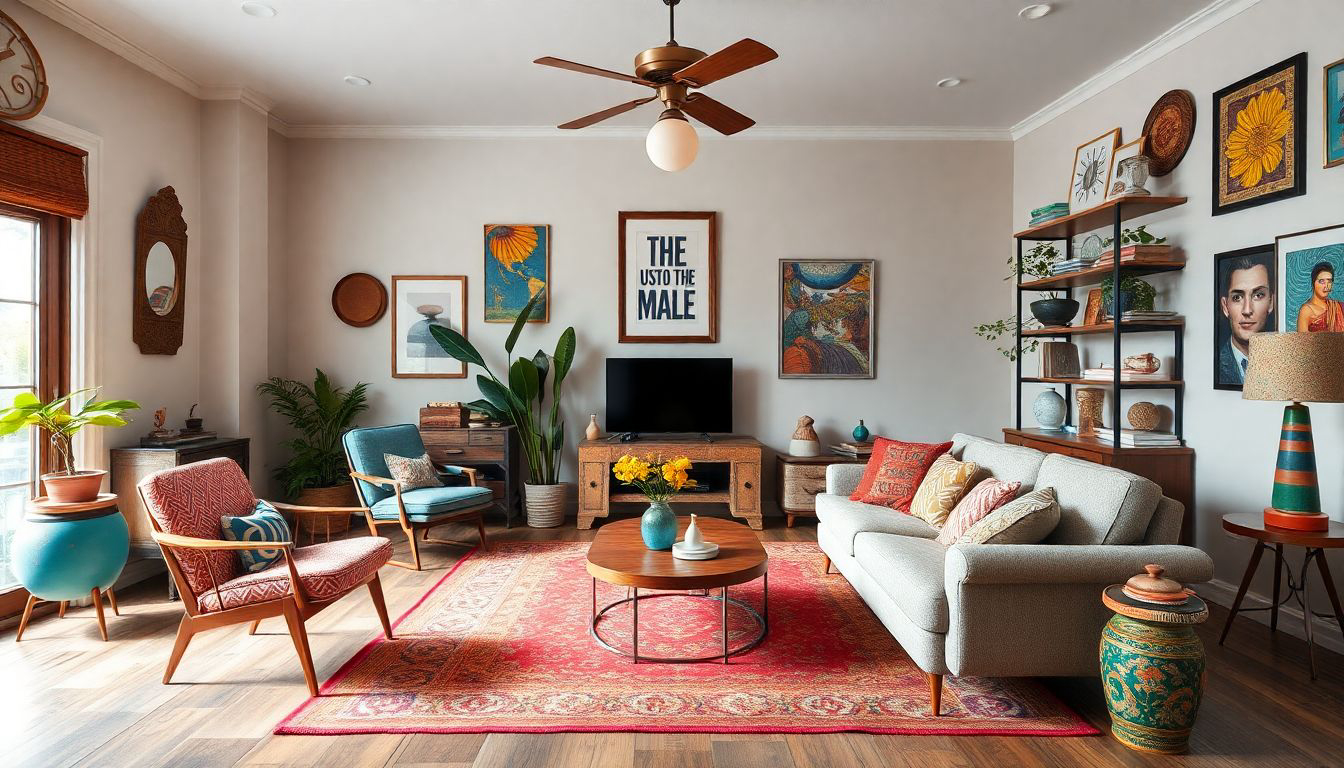
Eclectic interior design is a celebration of individuality, a harmonious blend of diverse styles that creates spaces as unique as the people who inhabit them. It's an art form that allows you to curate a living environment that tells your personal story through a thoughtful mix of eras, textures, and cultural influences. As interior designer Kelly Wearstler aptly puts it, "Old soul, new spirit. It's how I dress. It's how I design." This philosophy captures the essence of eclectic design – a style that embraces both the past and the present, creating spaces that are both timeless and contemporary.
The Essence of Eclectic Design
At its core, eclectic design is about combining elements from at least two decorating styles to create a cohesive and personalized space. It's not simply about throwing together a random assortment of items; rather, it's a carefully curated approach that requires a keen eye for balance and harmony.
The Art of Mixing and Matching
Eclectic interiors focus on bringing together various design elements – old with new, casual with formal, modern with vintage. This juxtaposition creates visual interest and depth, allowing each piece to shine while contributing to a greater whole. As interior designer Jennifer Adams notes, "Consider shaggy throw rugs or pillows, nubby or thick, weave fabrics on furniture, rough wooden treasures or furniture, and soft, smooth finishes on iron or other metals."
Creating Cohesion in Diversity
While eclectic style embraces diversity, it's crucial to maintain a sense of cohesion. This can be achieved through several methods:
- Color Palette: Choose a unifying color scheme to tie diverse elements together. As suggested by furniture company Joybird, "Let color serve as the great equalizer, pulling together the overall look."
2. Texture: Incorporate a mix of textures throughout the space, but remember to repeat certain textures to create a sense of continuity.
- Scale and Proportion: Balance is key in eclectic design. Aim for a mix of small, medium, and large pieces to create visual harmony.
4. Focal Points: Establish clear focal points in each room to anchor the design and prevent chaos.
The Psychology of Eclectic Spaces
Eclectic interiors often evoke a sense of warmth, personality, and lived-in comfort. They tell a story, inviting curiosity and conversation. This style appeals to those who value creativity, individuality, and emotional connections to their surroundings.
Interior designer Rita Konig emphasizes the importance of utility in eclectic spaces: "Let utility inform your decorations. It is quite daunting to be faced with an empty room and have to consider the colors and fabrics you'll use to decorate it, but utility is a great decorator. Think of how you use a room to help pull it together."
This approach not only ensures that the space is functional but also adds to its authenticity and charm. Eclectic design is not about creating a showroom; it's about crafting a space that truly reflects the life lived within it.
Mastering the Eclectic Style: Tips and Techniques
The 60-30-10 Rule
Portland designer Angela Todd recommends a "60%, 30%, 10% formula when implementing eclectic design in a space." This approach helps maintain balance while allowing for creative expression:
- 60%: The dominant style or color (often dictated by the architecture)
- 30%: A secondary style or color that complements the dominant one
- 10%: An accent style or color for visual interest
Embracing Negative Space
In the pursuit of eclectic design, it's easy to overcrowd a space. However, negative space is crucial for allowing the eye to rest and appreciate the curated elements. As Jennifer Adams advises, "Keep some spaces on shelves and tables empty, and consider the outline of an array of artwork for an interesting shape of the wall behind."
Incorporating Global Influences
Eclectic design offers a unique opportunity to showcase global influences and travel experiences. This could include incorporating artifacts from different cultures, using textiles with international patterns, or displaying artwork from various parts of the world. The key is to integrate these elements thoughtfully, ensuring they contribute to the overall narrative of the space.
The Evolution of Eclectic Design
Eclectic design has come a long way since its origins in the late 19th and early 20th centuries. Initially a rebellion against strict adherence to specific architectural styles, it has evolved into a sophisticated approach to interior design that celebrates individuality and creativity.
Today's eclectic interiors often incorporate elements of sustainability and technology alongside vintage finds and handcrafted pieces. This blend of old and new, high-tech and artisanal, creates spaces that are both forward-looking and grounded in history.
The Influence of Kelly Wearstler
No discussion of modern eclectic design would be complete without mentioning Kelly Wearstler, often referred to as the "mother of 'eclectic' interior design." Wearstler's approach exemplifies the artistry and intentionality required to master this style.
Wearstler's work is characterized by bold juxtapositions, unexpected color combinations, and a mix of textures that create visually rich, emotionally resonant spaces. As she puts it, "Literally everything goes back to love. That's what design and life is about: Falling in love. That amazing warm feeling that's in your soul."
This emotional approach to design underscores the personal nature of eclectic interiors. It's not just about aesthetics; it's about creating spaces that evoke feelings and tell stories.
Challenges and Considerations
While eclectic design offers unparalleled creative freedom, it also presents unique challenges:
- Avoiding Chaos: The line between eclectic and chaotic can be thin. Careful curation and editing are essential to maintain cohesion.
2. Balancing Old and New: Integrating vintage pieces with contemporary elements requires a keen eye for proportion and style.
- Cultural Sensitivity: When incorporating global influences, it's important to do so respectfully and avoid cultural appropriation.
4. Maintenance: Eclectic spaces often feature a variety of materials and textures, which can require diverse care and cleaning methods.
The Future of Eclectic Design
As we look to the future, eclectic design is likely to continue evolving, influenced by global trends, technological advancements, and shifting cultural values. We may see:
- Increased focus on sustainability, with more upcycled and repurposed elements
- Integration of smart home technology in unexpected ways
- Greater emphasis on biophilic design, bringing nature indoors
- More personalized spaces that reflect the digital age while honoring analog traditions
Conclusion: Crafting Your Eclectic Story
Eclectic interior design is more than a decorating style; it's a form of self-expression. It allows you to create spaces that are uniquely yours, reflecting your experiences, passions, and personality. As you embark on your eclectic design journey, remember that there are no strict rules – only guidelines to help you achieve balance and harmony.
The key is to approach your space with intention, love, and a sense of adventure. Collect pieces that speak to you, experiment with combinations, and don't be afraid to edit and evolve your space over time. After all, the most beautiful eclectic interiors are those that grow and change with their inhabitants, telling an ever-evolving story of life, love, and creativity.
As Kelly Wearstler reminds us, "As a designer, I'm a free spirit. It's like a moving target." Embrace this spirit of freedom and fluidity in your own eclectic designs, and watch as your space transforms into a true reflection of your inner world.
References and Further Reading
- Here's How to Pull Off an Eclectic Decorating Style
- 20 Beautifully Curated Spaces: The Eclectic Collector Look
- Eclectic Style Home: Get the Look With These Pro Tips
- What Exactly Does "Eclectic" Design Mean?
- Eclectic Interior Design Style
- The Art Of Designing An Eclectic Interior
- The Mother of 'Eclectic' Interior Design
More Articles
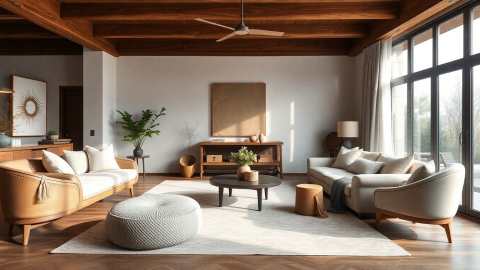
The Art of Nouveau: Crafting Timeless Elegance in Modern Interiors
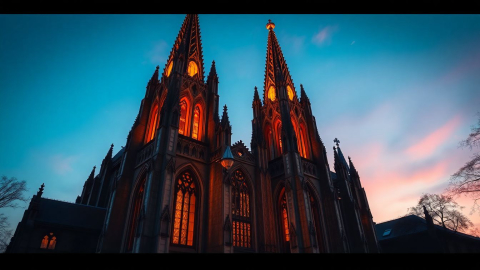
The Haunting Allure of Gothic Architecture: A Journey Through Time and Aesthetics
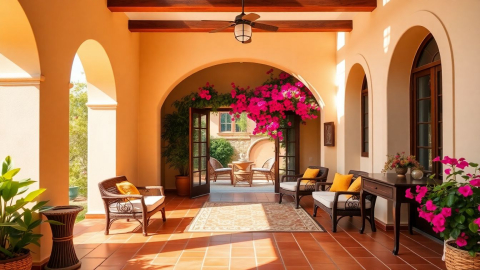
Embracing the Warmth of Mediterranean Interior Design: A Comprehensive Guide
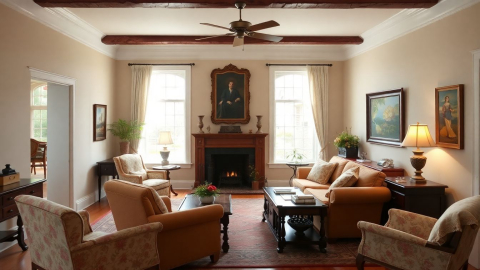
The Timeless Charm of American Colonial Interior Design: A Comprehensive Guide
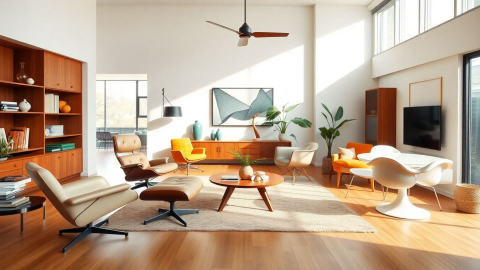
The Timeless Allure of Mid-Century Modern Interior Design: A Comprehensive Guide
